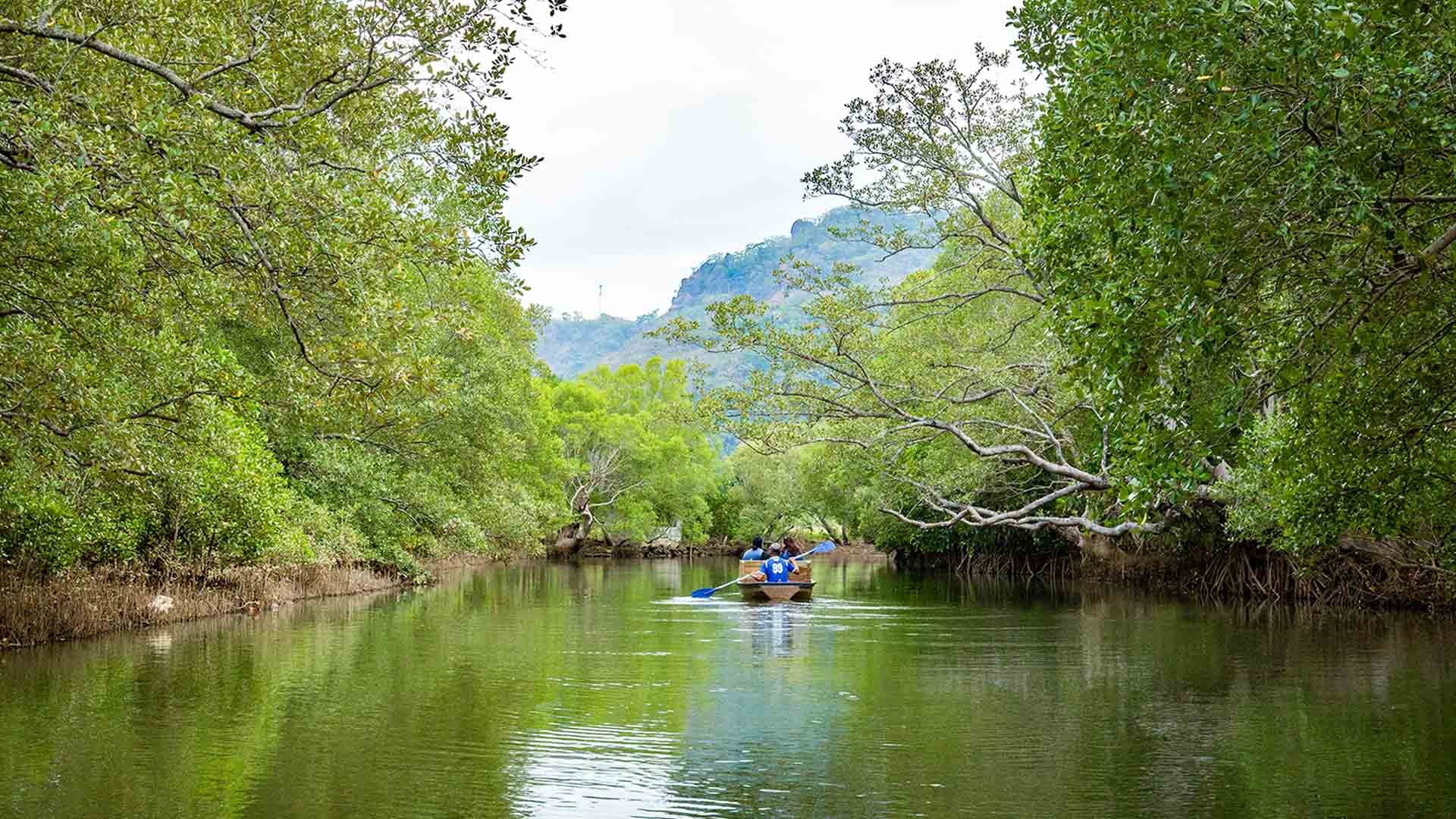Mangroves act as natural barriers for coastal communities against the wrath of the ocean, especially in a country that is known as one of the most vulnerable in the world to typhoons.
SM, through its Hamilo Coast property in Nasugbu, Batangas, continues to uphold its commitment to sustainability and conservation as it planted 50,000 more mangroves which covers 100,000 square meters of the estate. This is also touted as one of the largest mangrove areas in Nasugbu.
“At Hamilo Coast, we practice both environmental and social responsibility along with our partners and communities to make resort development and living sustainable,” said Frank M. Bolalin, Assistant Vice President at Hamilo Coast.

Hamilo Coast continues to protect its mangrove ecosystem together with the World Wide Fund for Nature (WWF) Philippines—a partnership it has nurtured since 2007.
Aside from its role of reducing coastal erosion, mangroves also help nurture a lush ecosystem of various wild and marine life. To date, there are 96 different bird species found at Hamilo Coast. Endemic cuckoo species like that of the rough-crested Malkoha and the even more vulnerable Philippine Eagle Owl have been spotted migrating and nesting in Hamilo’s forests.
The addition of mangrove trees will further serve to nurture the growing biodiversity of the area. Estimated to grow up to 50 feet high, the forest will provide new habitat for the existing array of species ranging from small bats and rodents to bigger reptiles and mammals.
Moreover, mangrove trees also have an enormous capacity to absorb carbon dioxide and greenhouse gases making them ideal pollution sinkers as they help bring about climate benefits.
Hamilo Coast also undertook the initiative to declare three of its coves, namely Pico de Loro, Etayo and Santelmo as Marine Protected Areas (MPA) in 2009.

To increase the biological capacity of fisheries and establish sustainable local food sources, WWF conducts an inventory of the flora and fauna at Hamilo Coast’s Pico de Loro cove, and performs year-round fish-catch monitoring. WWF also monitors the three MPAs of Hamilo Coast and conducts oceanography and hydrology studies in all thirteen coves.
Aside from mangrove reforestation, Hamilo Coast also undertakes various coastal resource conservation practices such as the growth of local plants, seeding of clams, the release of sea turtle hatchlings and regular coastal clean-up activities.
The WWF consistently monitors Hamilo Coast’s energy-use and recommends initiatives to continuously enhance energy efficiency. Alternative sources of energy have been used to power some of Hamilo Coast’s facilities such as solar power lamp posts and solar absorption air conditioning units.
Green building strategies were carefully considered in some of its residential areas, such as natural lighting and ventilation, solar energy in common areas, and an efficient waste management system.
Hamilo Coast also implements a solid waste management plan that includes waste source or segregation, materials recovery facility and vermicomposting where green wastes are composted and processed into charcoal briquettes. Waste water from the different Hamilo locators are processed by STPs (sewage treatment plants) and used as irrigation water for the surrounding landscape.
Residents of Hamilo Coast’s host barangay, Barangay Papaya, are also educated on how to segregate waste.
“Here at Hamilo Coast we are redefining the approach to tourism and hotel service especially when linked to biodiversity and local communities. In every aspect of our operations, from the electricity we use to how we manage our waste, we are incorporating sustainable practices that seek to minimize our environmental impact,” said Leah Magallanes, Vice President for Quality and Sustainability at SM Hotels and Conventions Corporation.
SM Hotels fully supports the United Nations Environment Program in its campaign to phase out Single-Use Plastics in the tourism sector. Since 2018, Pico de Loro Beach and Country Club and Pico Sands Hotel have implemented a food waste management system and replaced single-use plastics with paper straws and cups, good grade stirrers, takeaway packs, and refillable glass containers in hotel rooms.
In recognition of its conservation efforts, Hamilo Coast was cited by the World Wide Fund for Nature as its longest Sustainability Partner in 2020.
Watch more about Hamilo Coast’s mangrove development and SM’s inclusion in the 50 Sustainability & Climate Leaders campaign here:
SM Investments: https://www.youtube.com/watch?v=9hhWVVFHnWU&t=1s, https://www.sminvestments.com/media/multimedia/
50 CL Leaders: https://www.50climateleaders.com/sm-investments-corporation-responding-to-the-sustainability-challenge/




















